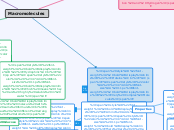These recieve chemical signal
These Polymers are
are made by
One of the most well known fats
Example
Two types of nitrogenous bases
Example
storage form in
Ecample
Function
the second
contain the
example
Help Make up
Function
Example
Example
The structural backbone of lipids
are derived from
their
Example
used for
main component in
a process where small sub units like
there are
Function
Example
Example
caused by
structural component of
Example
The 2 different arrangements
of glucose is called
Example
form of
RNA polymer help
Function
Example
Used in
caused by
Held Together by e
Their state at room temp.
Example
Examples
created through
Example
amino acids are connected by
Example
Chains of nucleotides are called
Used in
which makes them
Contains Hydrophilic
Help make up
the third
come in 2 forms
Example
Primary Lipid in
Come together to make the different
Have similar
since they are very large molecules they
link together to form a larger molecule called
example
the other 9 are called
Have weaker
Example
Nitrogenous bases
due to many
Fat obtained from Plants
example
example
Are
Have stronger
2 types of Nucleic Acids
is a second messenger molecule used fo
form of
Some bilayers contain proteins and carbohydrates
and they are best described as
Are polymers that are composed
of monomers called:
have different
Found in
cellulose fibers are
In
Two Types
Fat obtained from animals
Used in
Monosaccharides are
example
is made up of
Their state at room temp.
These Polymers are
The Function
held together by
Example
an example is
Link up in chains to create a
Comes in 2 different forms
Example
2 types of Nucleic Acids
Just like monosaccharides
they are
Example
Example
can be
Two Types
some nucleotides are
linked together by
Example
Come in 2 different forms
Example
the first and simplest type are
Can be arranged in a sphere called a
can be
the 2 strands run
In
Contains Hydrophobic
Example
Example
structural component of
is a
These Polymers are
folds to make
Two types of nitrogenous bases
the fourth
The building blocks in nucleic acids are
The
comes in 2 forms
linked together by
Proteins Very Complex Molecules
Amino Acids There are 20 amino acids.
Essential Amino Acids We need to get these from
Hydrophilic Amino acids with Polar or Ionic Functional Groups.
Intermolecular Forces of Attractions
Hydrophobic Amino Acids with non-polar functional groups.
R-Group Represents 1 of the 20
Primary Structure The linear structure of
Secondary Structure Small folded shapes within a
Tertiary Structure The overall 3-D shape of the protein
Quaternary Structure The combination of more
Hydrogen Bonding between the peptide bonds in the
Intermolecular Forces Different IMF's between
Enzymes Build and Break down Molecules
Structural Strengthen cells, tissues, organs
Signalling Allow cells to communicate each other.
Regulatory Bind DNA to turn genes
Transport Move molecules and nutrients
SensoryHelps us learn about our environment.
Motor Keep cells moving and changing shape.
Defense Helps organisms fight infection, heal damaged tissue and evade predators
Storage Stores nutrients and energy rich nutrients
Lactase helps infants digest lactose
Tublin Forms hollow tubes that
InsulinReleased into the blood stream after a meal. It activates the insulin receptor, which signals muscle and fat cells to store blood sugar
Hormones Androgen and Estrogen Control genes that trigger
Hemoglobin In red blood cells pick up
Opsins In the eye detect light. They convert light
Muscle Cells To contact muscle cells, millions of
Antibodies Battle bacteria and viruses that makes us sick
Gluten Is a storage protein in the seeds of wheat,
Neurons A specialized cell in the nervous
Neurotransmitters A chemical substance produced by nerve cells that stimulate or inhabit other nerve cells.
Receptors A chemical substance produced by cells
Lipids A non-polar compound that
Amphipathic A molecule with both polar
Fatty Acids A molecule that consists of a
Fats Is a Lipid that is made up of
Saturated Fatty Acids Has only single bonds between the Carbons
Triglyceride 3 fatty acid chains linked
Unsaturated Fatty Acids Has Double bonds between the Carbons
Saturated Fats Example: Butter and Lard
Unsaturated Fats Example: Olive Oil
Liquid They have shorter fatty acid chains
Fatty Acid Tail Faces inward away from water
Solid Have longer and straight fatty acid chains
Phospholipids A lipid that consists of
Phospholipid Head Faces Outward toward water
Steriods A lipid that is composed
Function Hormonal Signalling, cell response
Waxes A lipid that is formed when long
Function Water resistance and protection
Properties Hydrophobic, extremely non-polar,
Function:Cellular function and energy storage Stearic Acid
Nucleic Acids Serve as assembly instructions
Eukaryotes and Prokaryotes and in many viruses
Stores the hereditary information
Purines Two-ringed organic structures
Pyrimidines Single Organic Rings
Nucleotides Consists of a 5 Carbon sugar,
Double Stranded Molecules
Adenosine triphosphate (ATP)
Internal signalling in cells
Messenger RNA is the copy of instructions from DNA
Ribosomal RNA part of the ribosome and important for
Transfer RNA moves amino acids to the ribosome
Nicotinamide adenine dinucleotide (NAD+)
Nicotinamide adenine dinucleotide phosphate (NADP+)
Flaxin adenine dinucleotide (FAD)
Intermolecular Forces of attraction (IMF)
Monosaccharides Consists of 1 sugar Molecule
Combination Their Ratio is
Isomer a molecule withe the same formula
Disaccharide Made from 2 monosacharides
SucroseGlucose and fructose
Maltose 2 glucose molecules
Sugars Which mean they have polar
Lactose galactose and glucose
Hydrophilic Which means they are highly soluble in water
Hydrophilic and water soluble
Oligosaccharide Made from 20 or less
PolysaccharidesMany monosaccharides linked together
Monomers a small molecule that can bind chemically to other molecules
Polymer a large molecule made from
Energy Source
Energy Storage
Energy Storage
Homopolysaccharides contain only a single type of
Heteropolysaccharidescontain 2 or more 